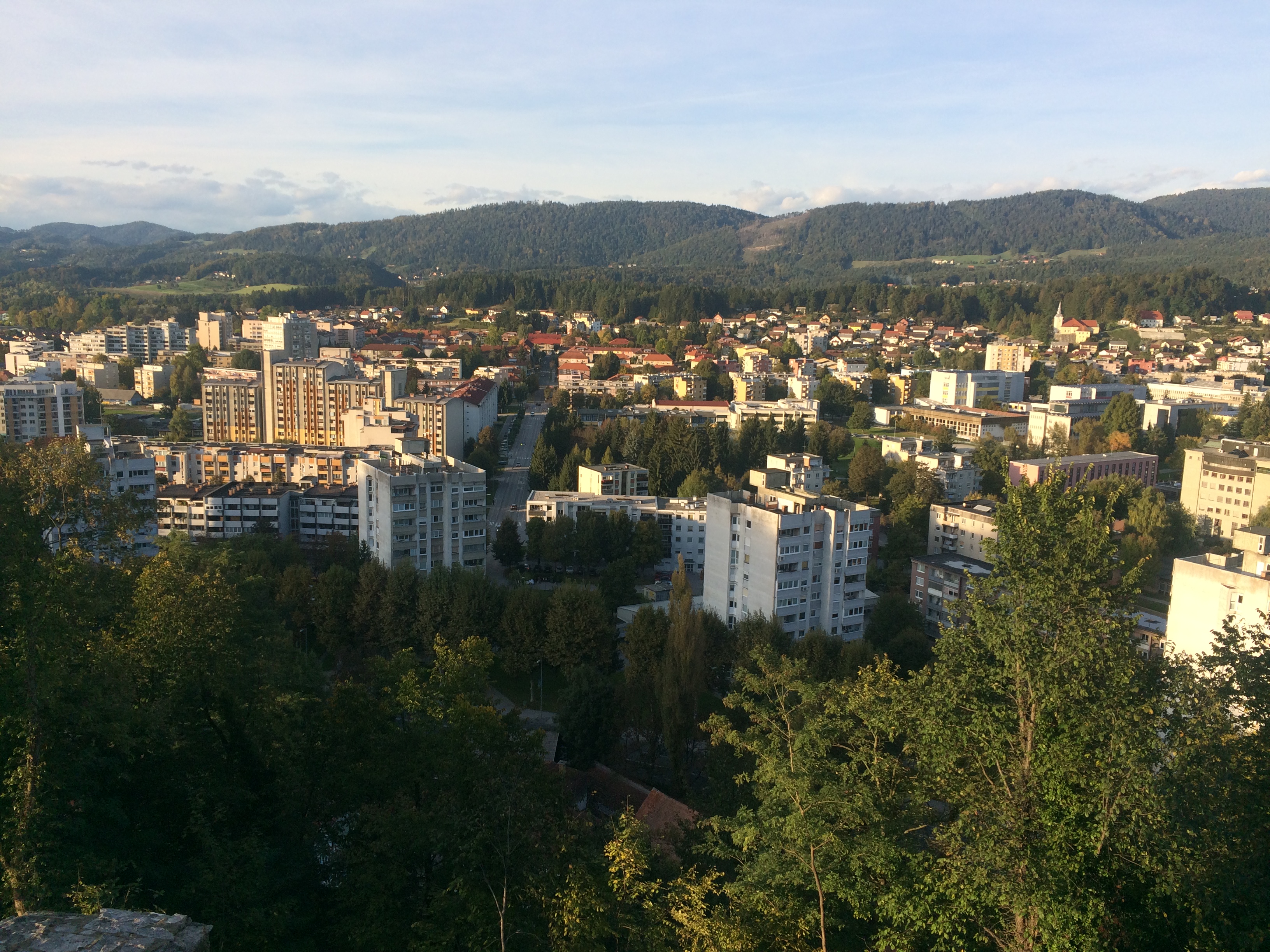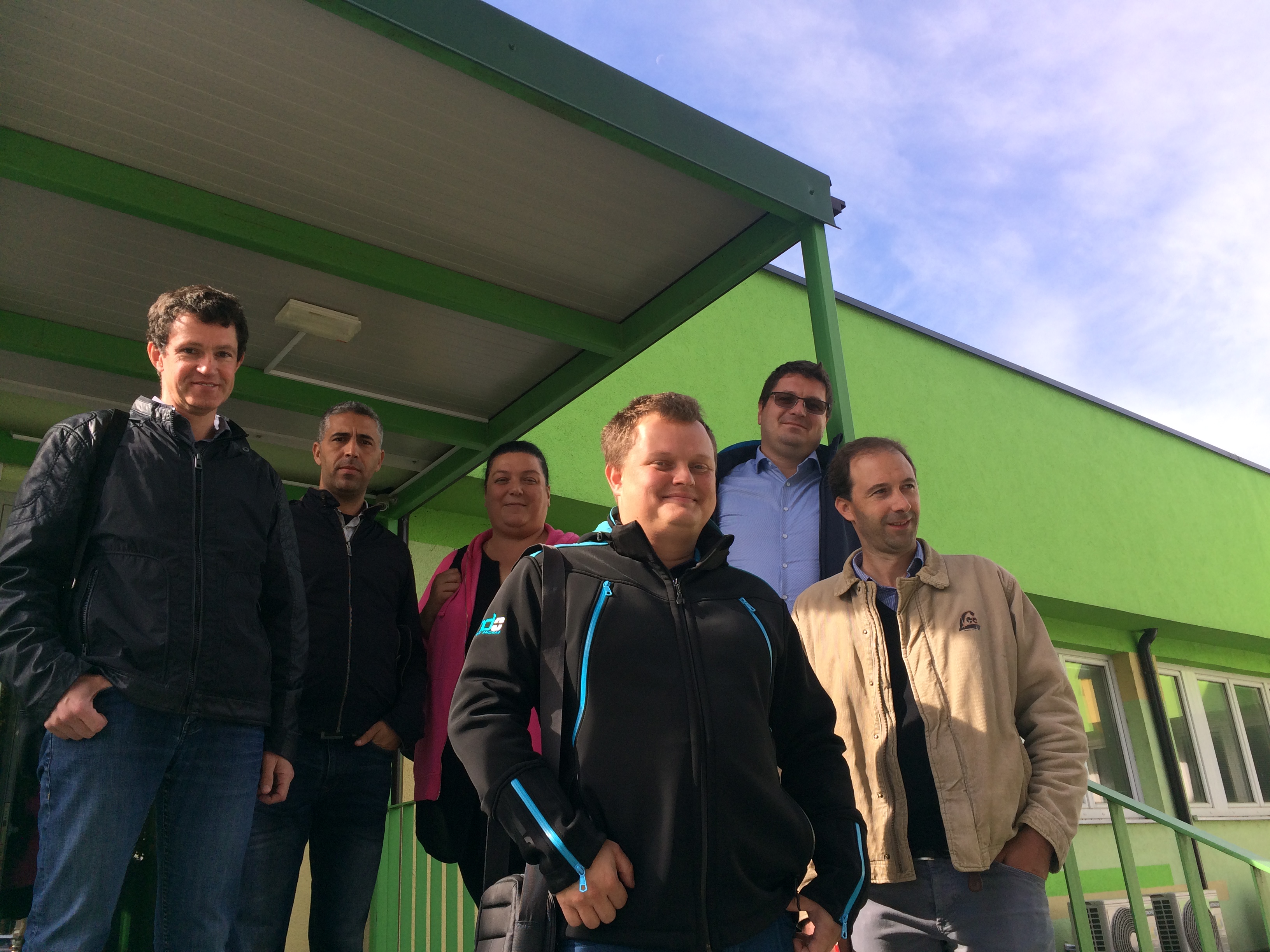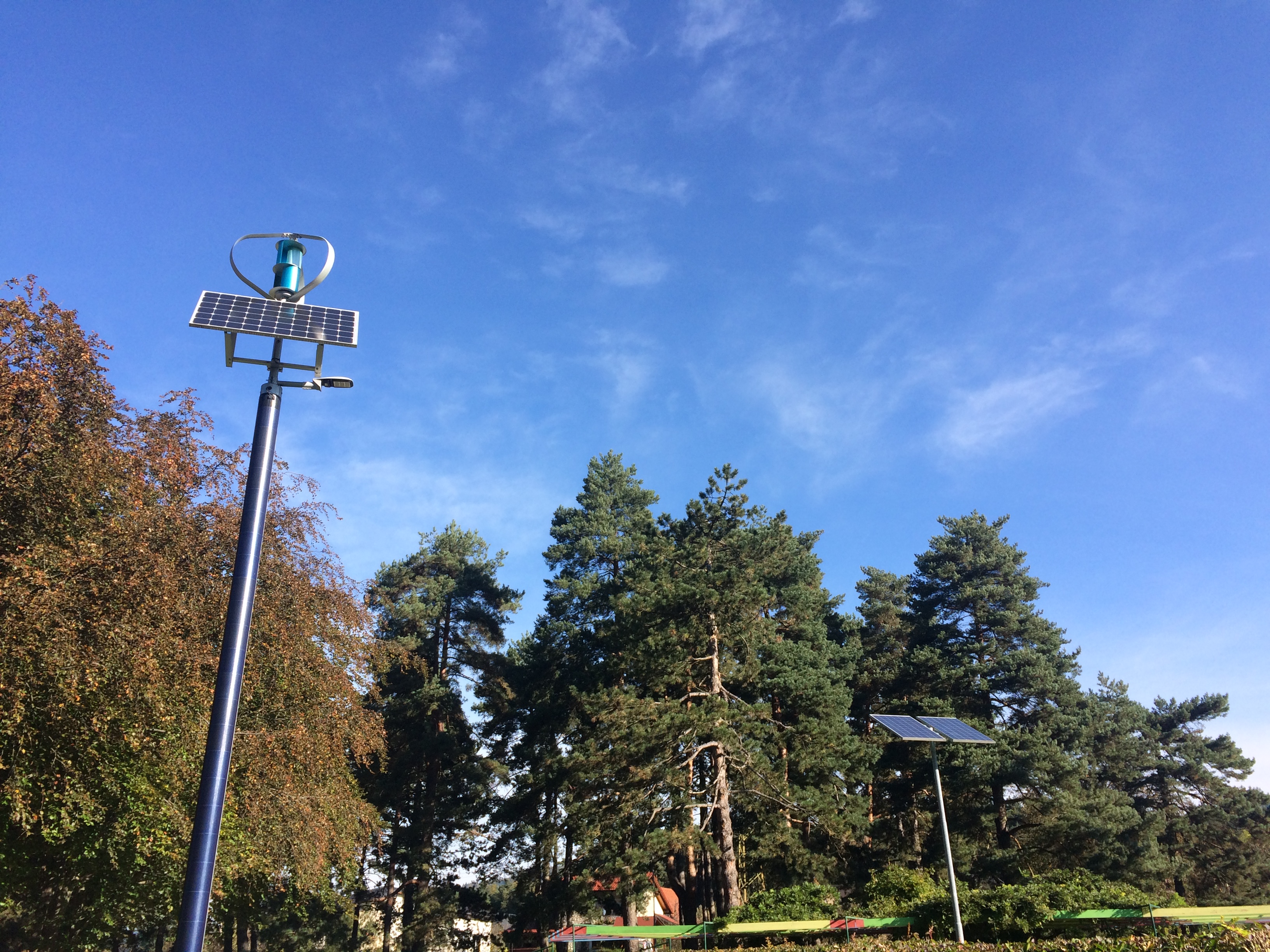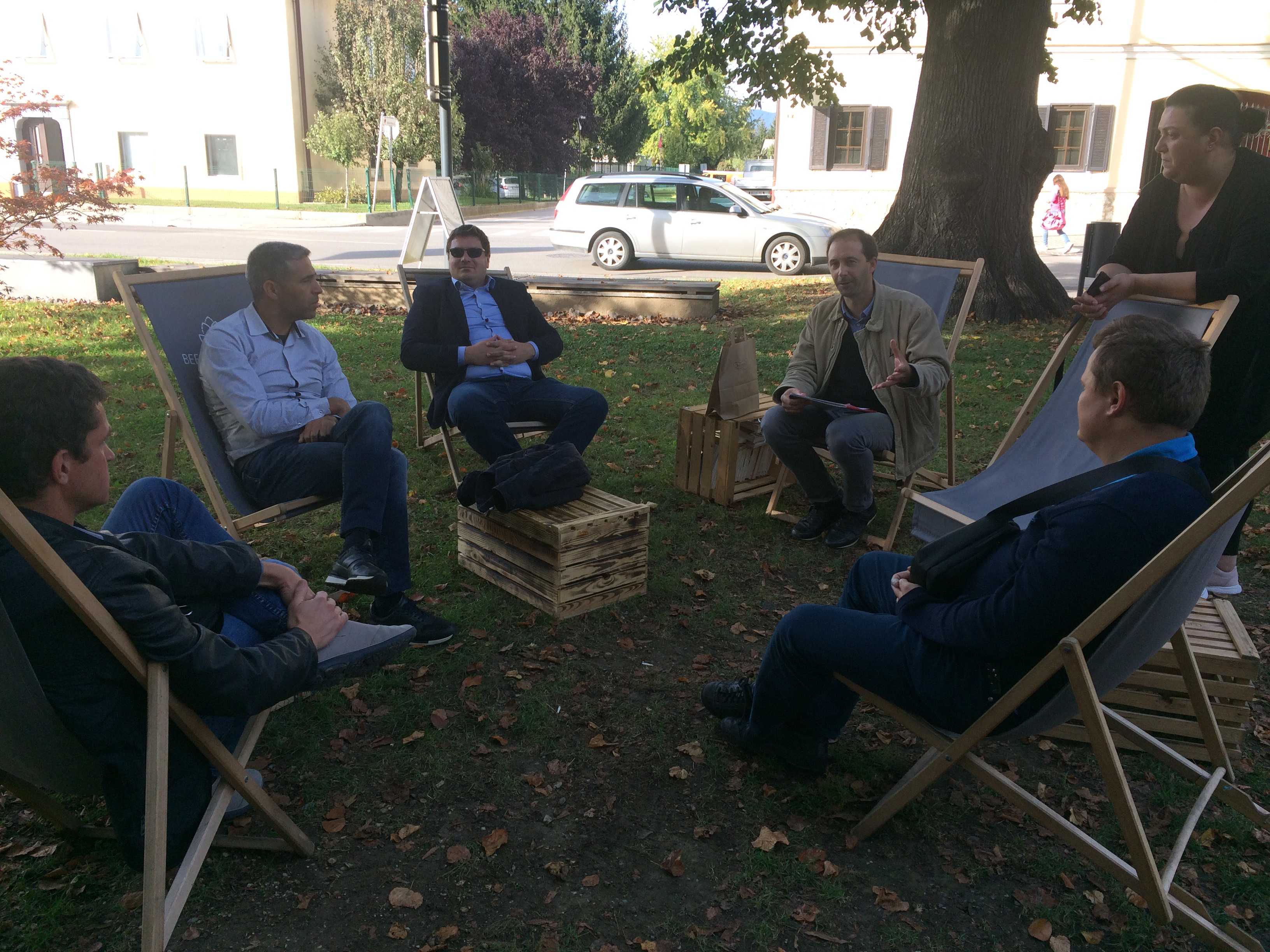KSSENA mentoring in PROSPECT Learning Cycle 1
The mentor Energy Agency of Savinjska, Šleska and Koroška Region (KSEENA) and mentees the Municipality of Mizil in Romania, the Mnicipality of Torres Verdas and the Municipality of Modagouro in Portugal participated in the online session on the 4th of July 2018. +Mentors' Corner
The Energy Agency of Savinjska, Šleska and Koroška Region presented the project ‘Renovation of Public lighting in Municipality of Velenje’, a work programme aiming at a top to bottom renovation of public lighting infrastructure. More specifically, the programme will support -among others- actions like the city-wide adoption of new and energy-efficient lamps, adoption of lighting technologies with longer lifetimes, consequently lowering the maintenance costs and lighting post refurbishment. The total energy savings are expected to exceed 1.200 MWh anually, which translates to more than 175.000 euros in energy cost.
During the Step 2 on the 22nd of August 2018 the team met online. The mentees presented their projects and project ideas. The main question raised by the group was "How can public authorities finance and implement sustainable energy projects in the sector of public lighting?''.
Municipalities from Portugal and Romania visited KSEENA to learn about EPC and ESCO for public lighting
Public authorities from the municipalities of Torres Vedras and Mogadouro in Portugal and Mizil in Romania visited the Energy Agency of Savinjska, Saleska, and Koroska region (KSSENA)(http://www.kssena.si/) based in Velenje on the 2nd and 3 rd of October to learn about energy efficiency projects in public lighting and how these can financed by innovative schemes. These schemes are non-traditional ways of raising funds and facilitating investments by mixing different sources (public or private) or engaging different partners (citizens or private sector).

From black gold to green city. A coal mining industry arose around Velenje between the 19th and the 20th century. In the 1950s, the city was established to accommodate miners from the former Yugoslavia. Now, the modern town, which has a green tourism agenda, has 30,000 inhabitants and is the fifth largest town in Slovenia.
Aside from public budget via traditional procurement, KSSENA combines these with public-private partnerships and/or European funds. In the municipalities of Velenje, Celje, and Polzela, public lighting projects have been funded via energy performance contracting (EPC) and public private partnerships (PPP) – which are both not relatively new – but are not yet adapted by local governments.
Before the two-day physical visit last October 2 and 3, 2018, the participants got to know each other first through two (2) online preparatory meetings: the first is an introduction to PROSPECT and presentation of participants, while the second focused on developing the learning agenda.
Meet the Participants
Petronela Sturz, head of development department in Mizil in Romania, manages projects funded from different financial sources in areas, such as energy and public infrastructure. Petronela is interested in developing and implementing projects on energy efficiency – and is considering different financing schemes for these projects.
Alcino Antunes from Torres Vedras in Portugal is developing a street lighting project, which will focus on replacing traditional lighting fixtures with LEDs. Further, “I am interested in obtaining new knowledge in the area of energy efficiency and develop new activities to reduce consumption in the Municipality of Torres Vedras.”
Meanwhile, Helder Ferreira from Mogadouro, also in Portugal, is developing a software application that can be used by municipal energy managers for energy optimization in public lighting. “I intend to listen to the mentor and learn from him and with his experience in public lighting projects. I intend to have access to concrete energy optimization projects and realize their implementation and feasibility.”

From left to right: Saso Mozgan (KSSENA), Helder Ferreira (Mogadouro, Portugal), Petronela Sturz (Mizil, Romania) and Nejc Jurko (KSSENA). Foreground: Gregor Podvratnik (KSSENA) and Alcino Antunes (Torres Vedras, Portugal).
Learning from Velenje
From KSSENA, project manager Nejc Jurko, who has experience in energy performance contracting, third party financing, and public-private partnerships for public lighting projects, introduced the key steps in the process for EPC and PPP. With participants coming from different countries, the legal and regulatory conditions has to be checked for both EPC and PPP. Nejc emphasized to “not just copy and paste models. You have to adapt to your country or municipality…”
Along with Nejc were his colleagues Gregor Podvratnik and Saso Mozgan. Gregor presented data collection using Geographic Information System (GIS) to have a good and accurate data for locating public lighting fixtures, for selecting the best possible options for renovation, and for calculating future energy savings. Nowadays, because of this GIS updates integrated into an online energy management tool, the public can inform operators if there are defects and breakdowns on public lighting.
Saso, on the other hand, introduced ways on how to evaluate public lighting projects. A highlight in his presentation is Slovenia’s regulation on light pollution and upper light output ratio (ULOR) of zero (0), which means that light does not shine upwards – and only focus where you want it. By minimizing ULOR, light would not get lost and energy efficiency is maximized. These information brought animated discussions on how different countries and cultural contexts value lighting.

Of course, the visit was not complete without visiting practical solutions in Velenje, Celje, and Polzela. Participants also met other stakeholders in the public lighting sector. They visited ADESCO (http://www.adesco.si/), an energy service company in Velenje and discussed energy management issues, such as data collection and GIS development to monitoring and verification. Geolux (http://geolux.si), a private company in Celje, which provides innovative solutions for public lighting, was also visited. Participants and Geolux representatives discussed about public procurement and tendering requirements.
Lessons learned

Wrapping up: The visit ends in Polzela, another municipality in Slovenia. What have the participants learned?
On reflecting about the visit, Petronela has said that she met her learning objective – which is to have an overview of financing schemes for energy efficiency projects in public lighting in her municipality, Mizil. Alcino has also learned about practices that he can adapt in his municipality, Torres Verdas, such as on data collection of lighting fixtures to make sound decisions for public renovations. “Technical knowledge is very important” Meanwhile, Helder saw the learning activity as an opportunity to meet new people, make connections, and have future collaborations. He has also raised the possibility of contacting ADESCO on their energy management tool in the future.
On the peer-to-peer learning programme, Nejc mused: “It was better than we expected.” Nejc added: “We also knew more about Portugal and Romania [because of this activity]. EPC is not something new for Slovenia, as it is already been developed for 10-15 years. In some other countries, ESCOs are not yet developed, while here we do not have to use public money for investments.” On the last week of October, the group will meet again online. This time to discuss how transferable the financing schemes are for Petronela, Helder, and Alcino in their own contexts, what possible constraints will they face, and what are their next action steps.
Replication/Transferability: EPC and ESCO in Public Lighting
During the 4th step the Mentor and Mentees of the group participated in the transferability and evaluation session on the 16th of November 2018.
During the meeting a transferability analysis was conducted outlining the mentees’ point of view for the conditions of success of possible future endeavors funded by EPC and ESCOs. The results were that 2 out of 3 were very optimistic about overall transferability. Also, they provided detailed action plans for those endeavors inspired by the newfound experience and methods learned from the previous steps.
Rethinking the financing scheme
Main impressions and understanding about the financing scheme:
- The financing scheme, model ESCO, must respect the national legislation of each country. In the process of public procurement will be necessary legal support in order to properly formalize all the parts of the public tender.
- Mentess were informed on the financing schemes used and compare with those used in their own countries.
- ESCO financing scheme may be new for mentees, but it’s a good alternative in case of the failure of a more money-saving option (like financing from European funds). Also, ESCO financing scheme is based on a public tender procedure, with some specific aspects regarding the contract.
Key strengths of the financing scheme:
- The recovery time of the investment in public lighting projects is about 10 years, the longer the durability of LED appliances the more attractive the project becomes.
- Easy to perceive, solicit and treat
- Some mentees thought that ESCOs are good alternative for implementing energy efficiency measures. better accepted in their countries because it doesn’t involve important amounts from beneficiaries.
Key weakness of the financing scheme:
- LED lighting technology is still not well tried, and some components of lighting fixtures have a much shorter life span than LEDs. These are projects that present some risk to ESE companies.
- Legal aspects
- Need of well trained human resources and efficient monitoring of the results of implementation
Key steps to set up or develop the financing scheme:
- Before proceeding with a hiring process, an in-depth study of the existing lighting technology should be carried out to ensure adequate lighting levels and to request in the public tender solutions with LED lighting that reduce the consumption of electric energy and guarantee good lighting levels. It is very important to provide a warranty period in which ESSE is responsible for repairing any faults that may arise.
- (1) Capacity building in legal aspects, (2) baseline energy audit for public lightning , (3) calculate and determine the technical conditions, (4) develope technical documentation as part of public tender and apply (5) draft ESCO contract, in order to control, as better as possible, the obligation assumed by the winner bidder (6) hire manpower, implement and (7) develop an application in order to monitor the contract implementation

